Mostly when reading sailing blogs or skipping through the sailing magazines you will end up seeing pictures like the one underneath: Perfect scenes of a boat dashing along, skipper and crew acting out brilliantly staged and the whole situation clean and nice just as if it was a Hollywood movie. Well, real sailing is not like this, that´s a lesson you will learn during your first sailing trips, some will learn by the hard way – by falling over a sheet, stumbling upon a halyard or simply mess up a manoeuvre because lines have not been ready.
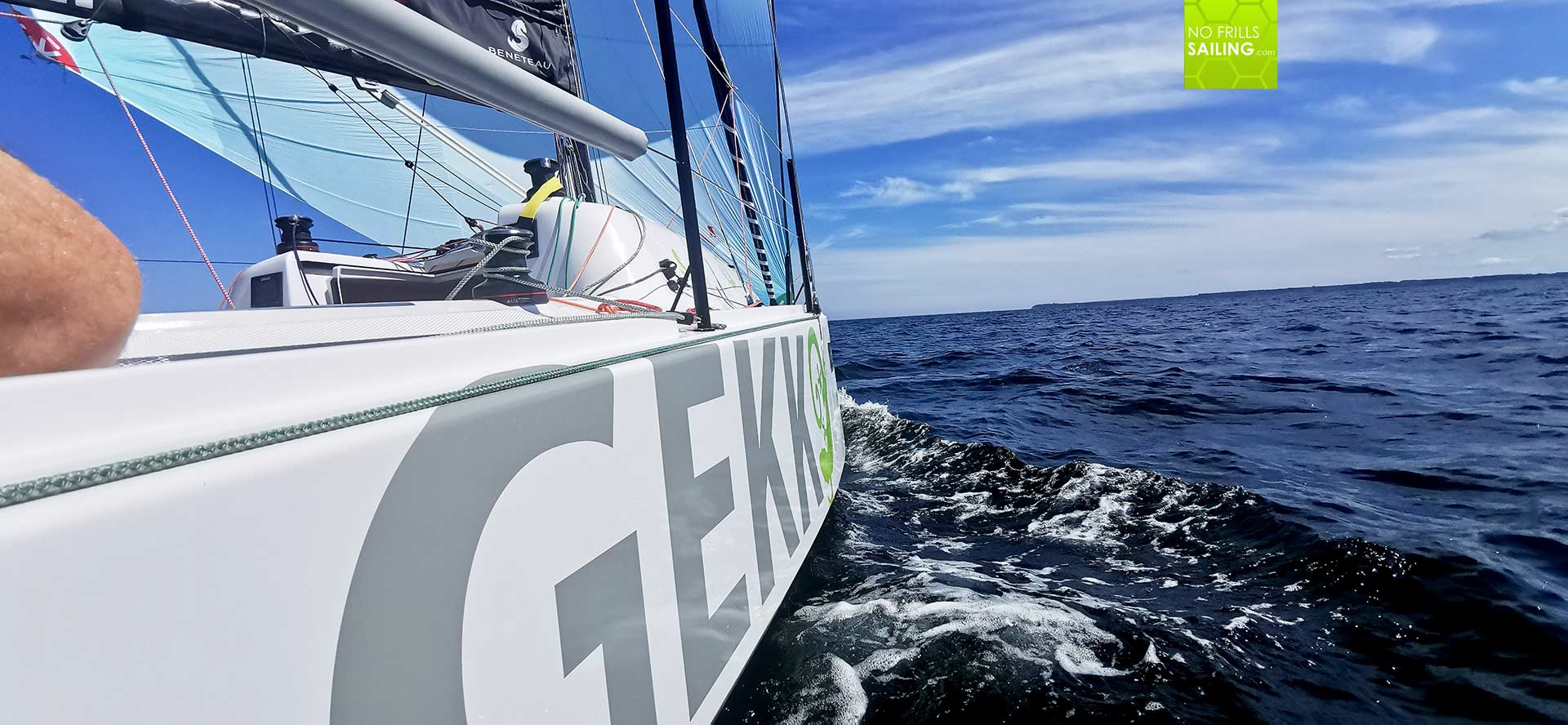
I do love post articles with these “perfect” pictures as well, as this of course is what we all love about sailing, but in order to truly appreciate a genuinely picturesque moment like the one captured above, a ship must sail in a good manner and order: This article is aimed at giving some hints what to care about when underway and how to avoid sheet mumble and rope salad at all times. Especially on small boats like mine: Bigger yachts with their electric winch layout mostly have dedicated stowaways for ropes, but honestly, who of us is sailing brand new +45 feet yachts?
Ropes and lines as a safety hazard
So, why should you care about clearing up your boat ripe-wise? Well, you may not see it this way but believe me – lines are a big safety hazard on a boat. As they are round shaped, they will cause a person to slip, slide and fall in a split second. Falling down on a boat mostly results in serious injuries and – as a follow-up – in retarded reaction times to changing situations (for example, a heavy gust is suddenly blowing – where are there reefing lines?) and thus eventually in much greater trouble in consequence. So, the first and foremost important rule is: Keep your cockpit tidy and free of lines!
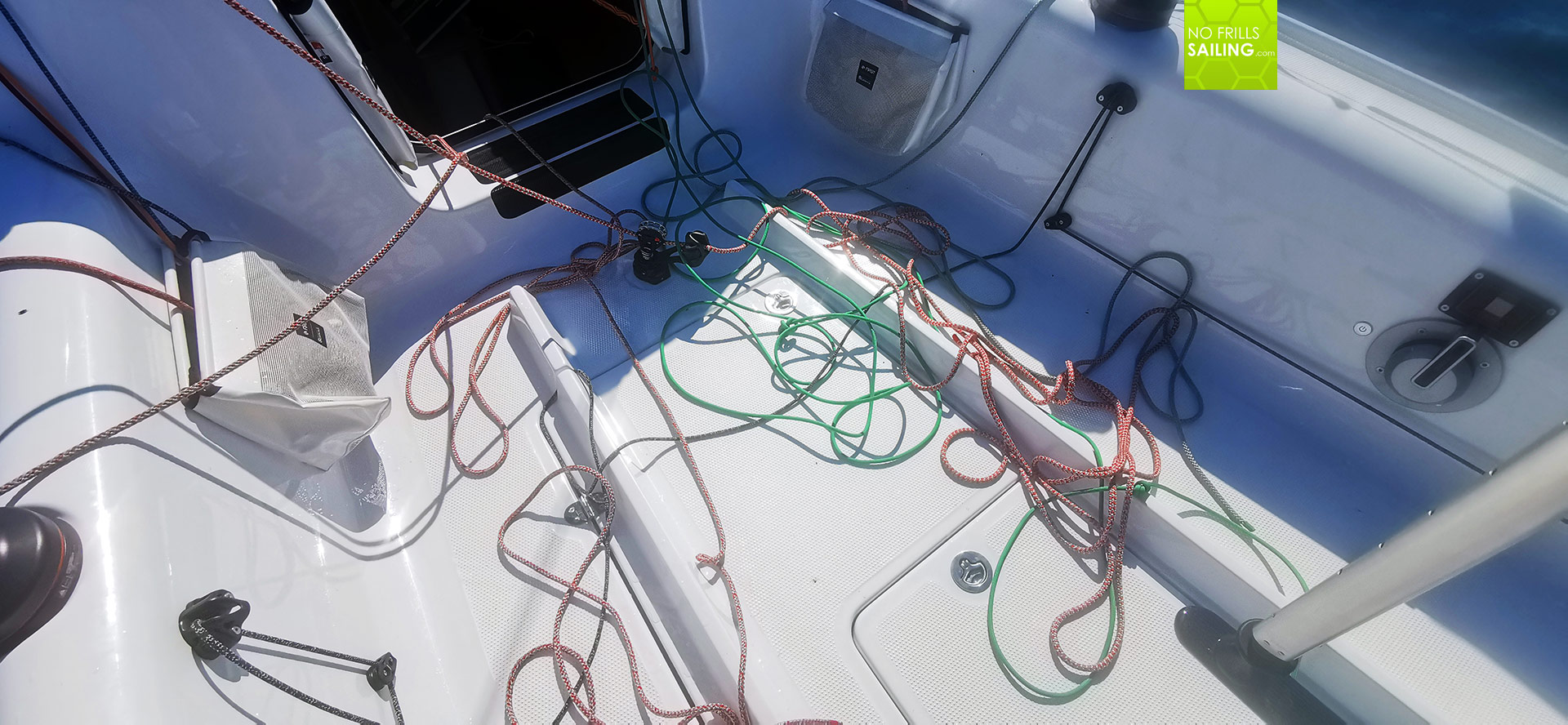
Secondly, as I mentioned, sailing outside means to react to ever changing situations. Wind may come and go, wind directions may occur. Especially on “fast” points of sail, broad reach and upwind, and starting in moderate wind conditions fast reactions to such changes may be eligible. Having the lines ready for any manoeuvre, be it a tack or gybe, reefing, easing the sheets and even drop the main in a severe gust is the absolute rule at any time when at sea: Have all lines ready at all times to perform all possible manoeuvres! In this, no change of situation can craze you out, you will be able to react in a fast and professional manner, staying calm and dominant. To stay in control – on a boat – means to stay in control of the lines.
Clearing up ropes: The right and the wrong way
Now, I have seen this regularly on boats when I open my eyes in marinas, even when I sail with other people: Mostly the intention to clean up the sheet mumble is apparent, but the execution is somewhat wrong. Look at the picture below where I have re-enacted such a situation: One of the ropes is cleared away the wrong way, the other one is done just right. Which one, would you say, is right?
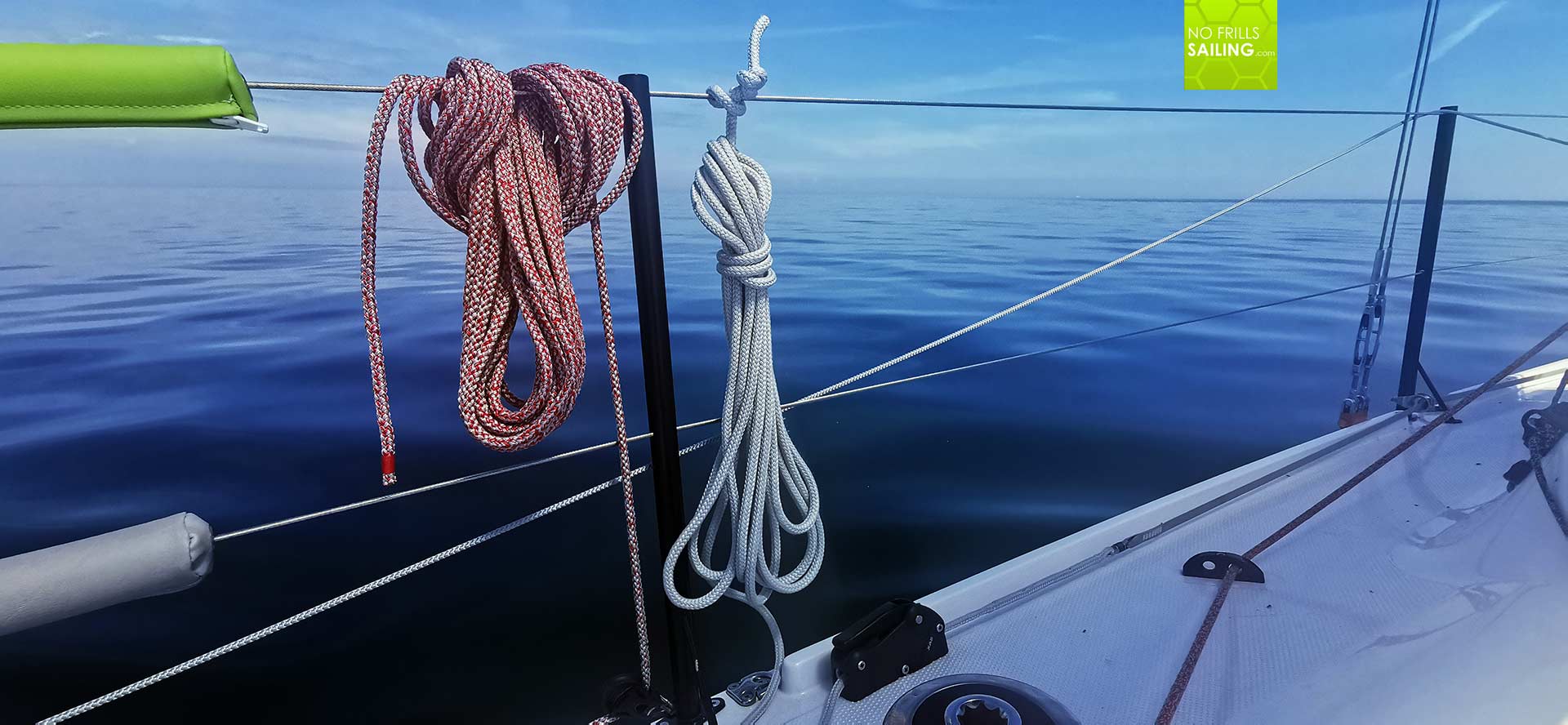
Of course the red rope is done the right way: Lines which are currently not in use may be coiled up and put over the reeling in a simple tie-up like shown in the picture. In my case that is a Gennaker-sheet. If needed, it takes a mere second to have this rope ready. The white line, which in my case is the furling/reefing line of the Jib, is done the wrong way (at least when at sea). Coiled up and fixed with a clove hitch to the reeling may be appropriate when the boat is tied up in the harbour, but out at sea this would mean at least half a minute to untie and make the rope ready. Imagine a violent gust rocking the boat and you must take away sail area … this time delay can cause trouble. In essence: Make sure you have lines ready to use – not ready to admire.
Sailing underway: A clean Cockpit is a must
When I am out sailing GEKKO (and I do apply this practice to all other yachts I am on) I have a simple habit of clearing up all ropes after a manoeuvre to be ready for any new manoeuvre. That means, after a tack for example I coil up the windward sheet and put it to the winch, one wrap around and ready for the next tack. The leeward sheet, the rest that is not in the winch, is also coiled up and stowed near it, ready to veer or luff at any time.
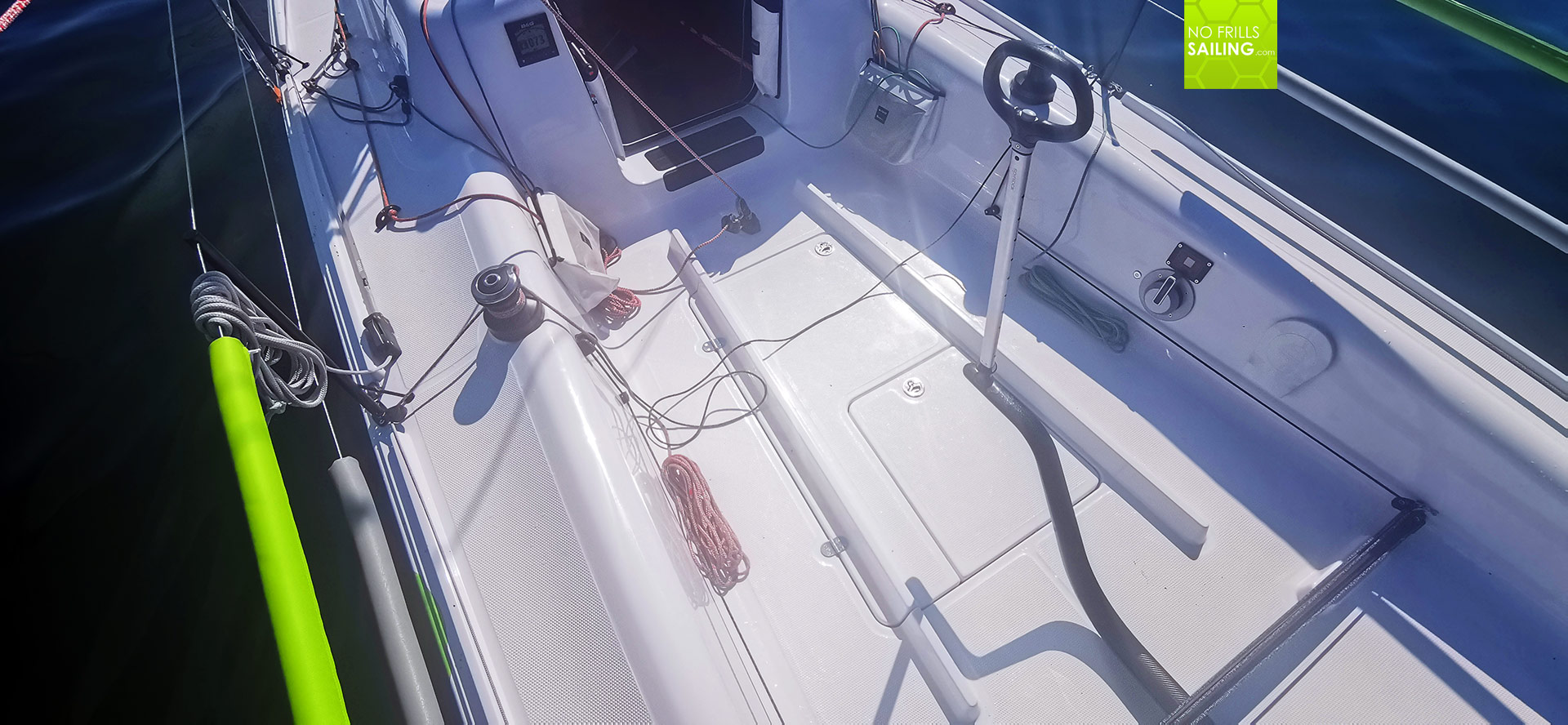
On a boat like my First 27 SE/Seascape 27 (or any other smaller, sportive sailboat) you may not have a dedicated bench or stowage for the lines. I do have designated areas where I normally do not sit around or need the space, where I put the bulk of the lines. You can see it in the picture above: The sheets are placed aft of the winches, mainsheet under a rope-bag (later more to these bags). All lines are cleared away, the cockpit is tidy and – despite of the traveler-sheet that is an endless rope which cannot be stowed away – there are now tripping- and falling-hazards apparent. And here comes a pro-hint …

Let´s talk about the mainsail halyard. On quick sailing boats, like mine, or in heavy winds this rope may become one focus point of all attention. As a manoeuvre of last resort, when everything else missed to calm down a situation, a sudden drop of the mainsail may be the best reaction. I have seen it so many, many, many times that the halyard does not get coiled up nicely and packed away ready to drop! The result is often a knot or mumble and the mainsail won´t fall. Pressure in the system, sail is beating violently in the wind, everything is rocking, one man at the mast and everybody is confused why the damn sail won´t come down! Now, the solution is simple: After having hoisted the mainsail, immediately afterwards, I prepare the halyard so that it can uncoil in an event described before without knots or turmoil. Remember: Keep all ropes ready at all times.
Gennaker-sailing is a mess …
Well, it is absolutely not, of course: Gennaker sailing is of course most thrilling, rewarding and fun. But rope-wise it is a mess though. Remember: Additionally to all the lines apparent in your boat´s cockpit (mainsheet, two Jib sheets, traveler sheet and so on) you will now receive six (!) lines more when handling a Gennaker. That can – and will be! – perfectly confusing especially for starters. Believe me, I am in this right now myself. How can you tackle this sheet mumble when sailing in light winds? At first, the old rule: Be prepared and tidy.
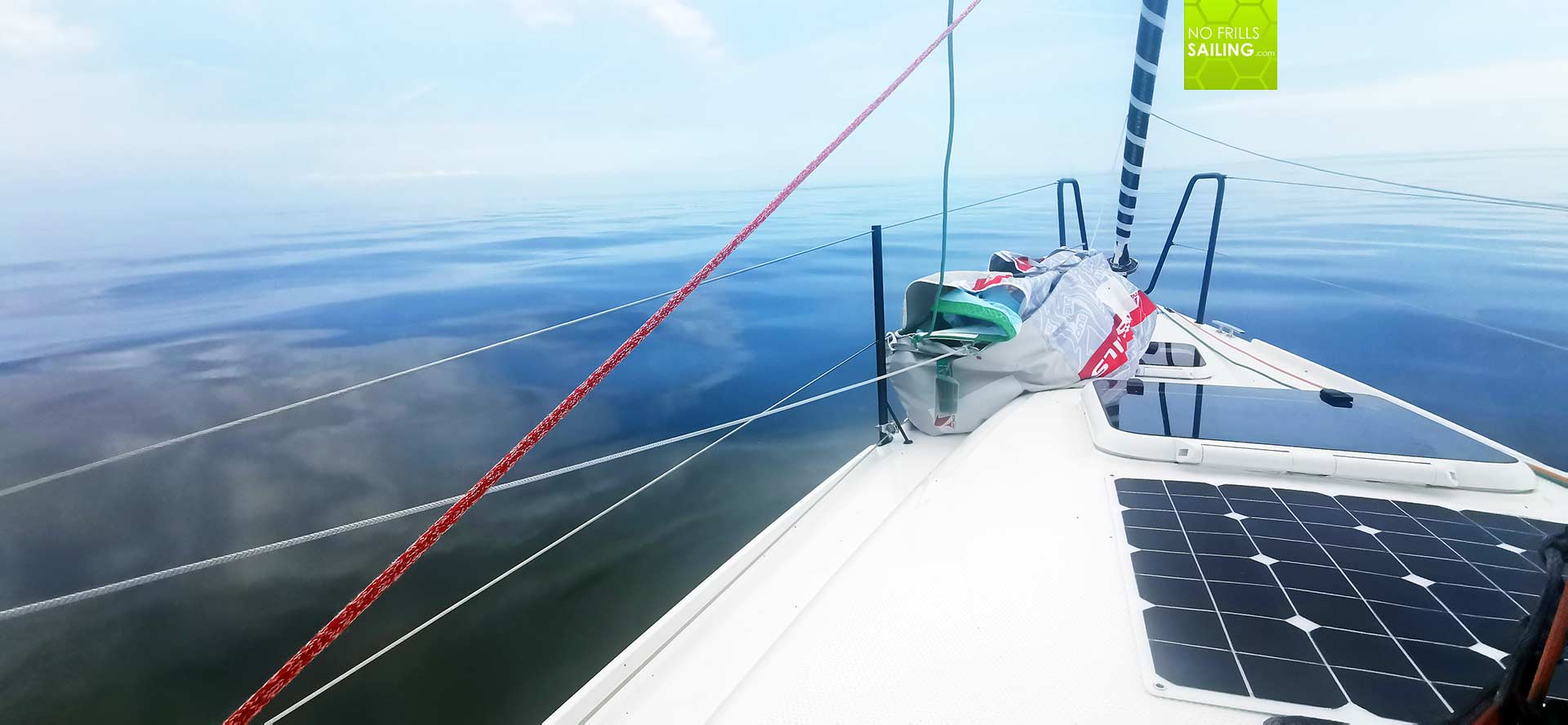
As you can see in the picture above, my Gennaker is ready to be set and all lines are cleared: Halyard (Spi-Top) is attached, both sheets are attached, leading aft and (see next picture below) ready to be used. In this, I always try to have the lines arranged in the cockpit in such a way that I cannot confuse Gennaker-ropes with Jib-ropes, which – also in a case of emergency – can cost valuable time and cause some more trouble to happen. If you sail single handed, like me, the only one possibly getting confused is you – but imagine sailing with a crew: That is a multitude of people getting confused, grabbing lines, opening cleats and pulling or veering at sheets … a clear cockpit is the key.
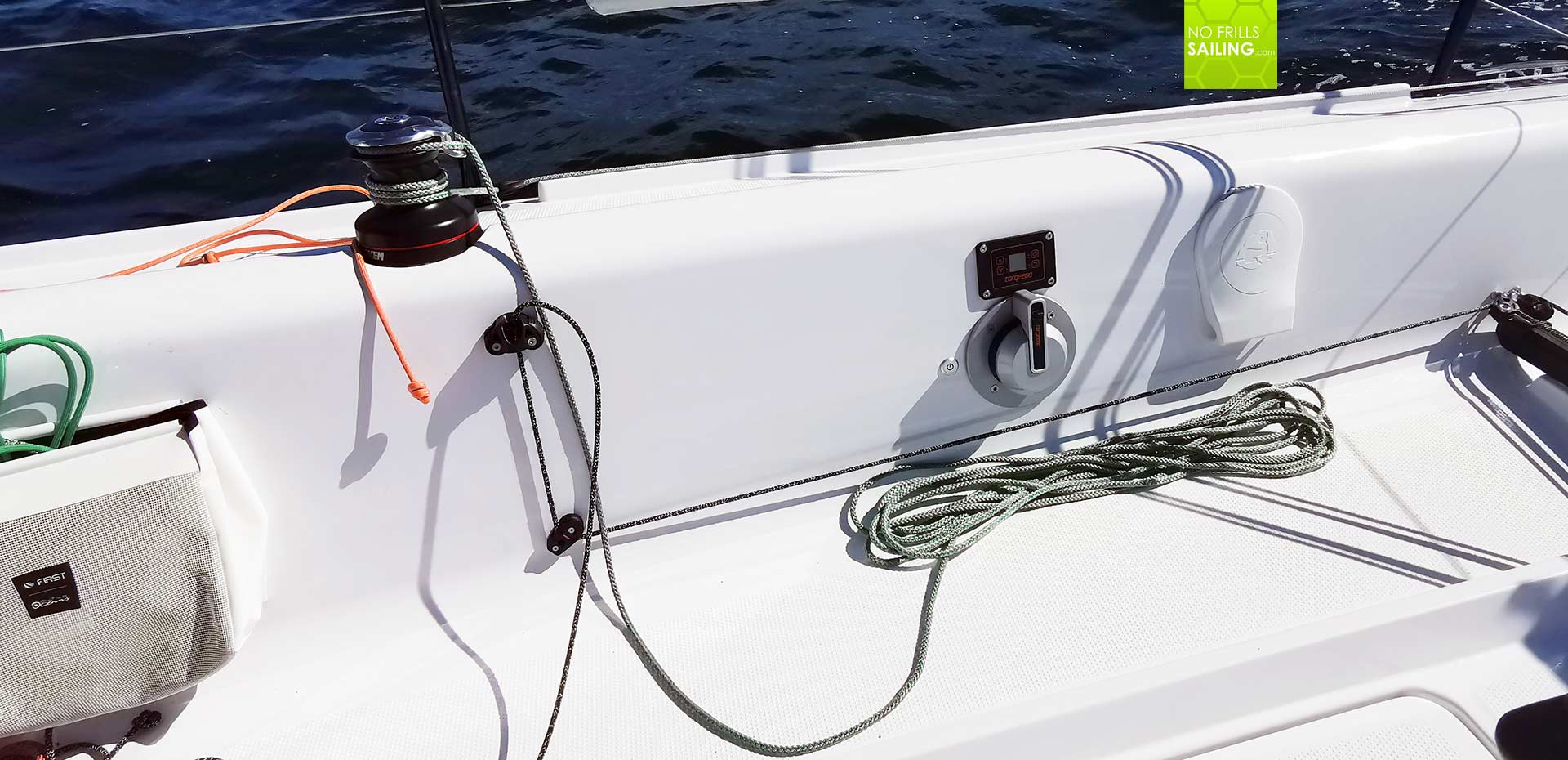
Now a word to rope bags. I like them and they are very practical: For any things except for ropes. When underway, I store a bottle of water in them, have my smartphone conveniently placed in these or – that is the most I do – have lines stored there I will definitely never used, like the Frac-Spi, the end of the 3D-Jib inhauler or else. Active lines are never put in rope bags as they will mumble up and form knots, which is shit when takking them out and having to clear them up: Time is key.
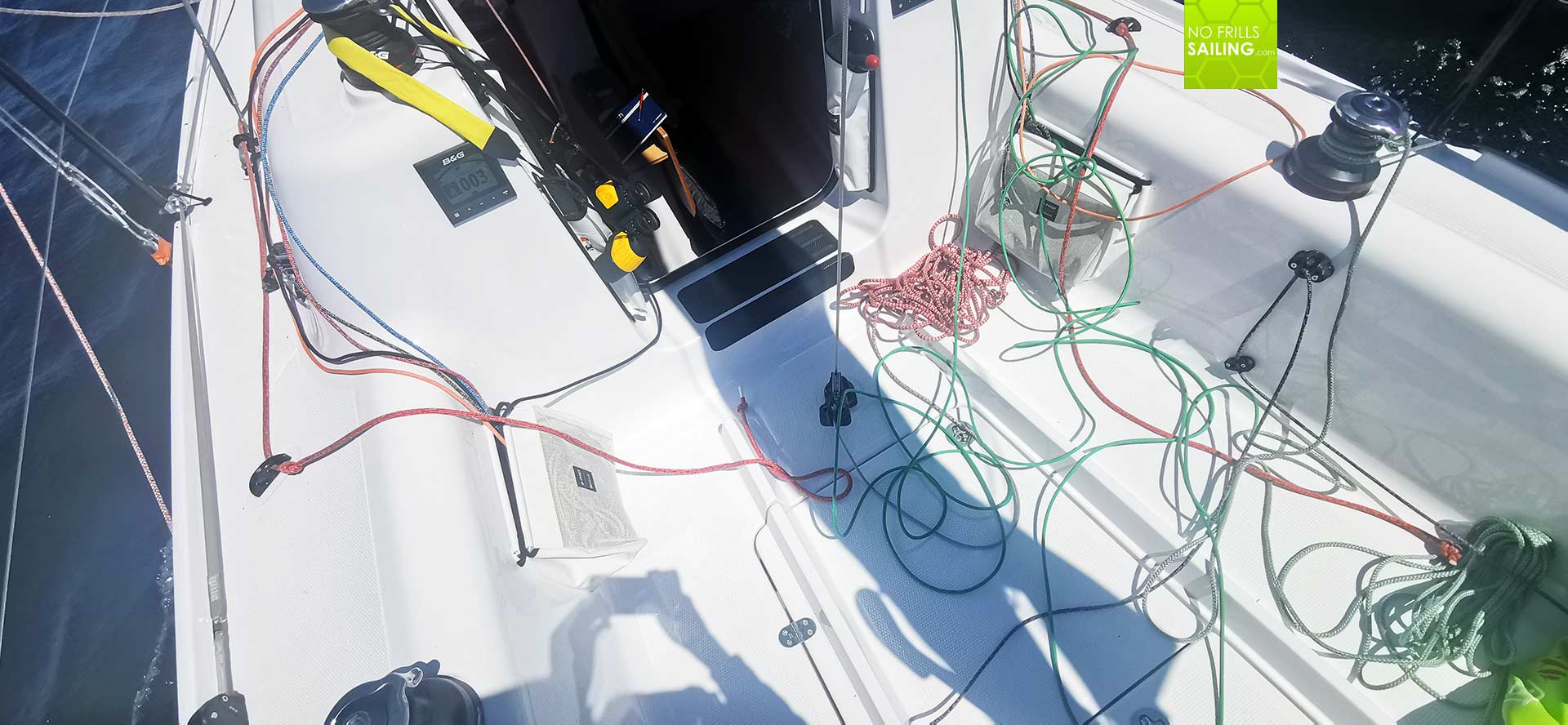
If you take a look at my cockpit after I have hoisted the Gennaker, you will notice how messed up it looks: There´s the “rope out”-sheet, the tackline, two Gennaler sheets and the Gennaker halyard (which adds up to six ropes in total) laying around. Addiotinally to mainsheet and two Jib-sheets of course, which will round up the mess here. What a mess, don´t you think? If, after looking at this picture, some people still don´t understand how important tidiness ropewise on a boat is … well, I don´t know.
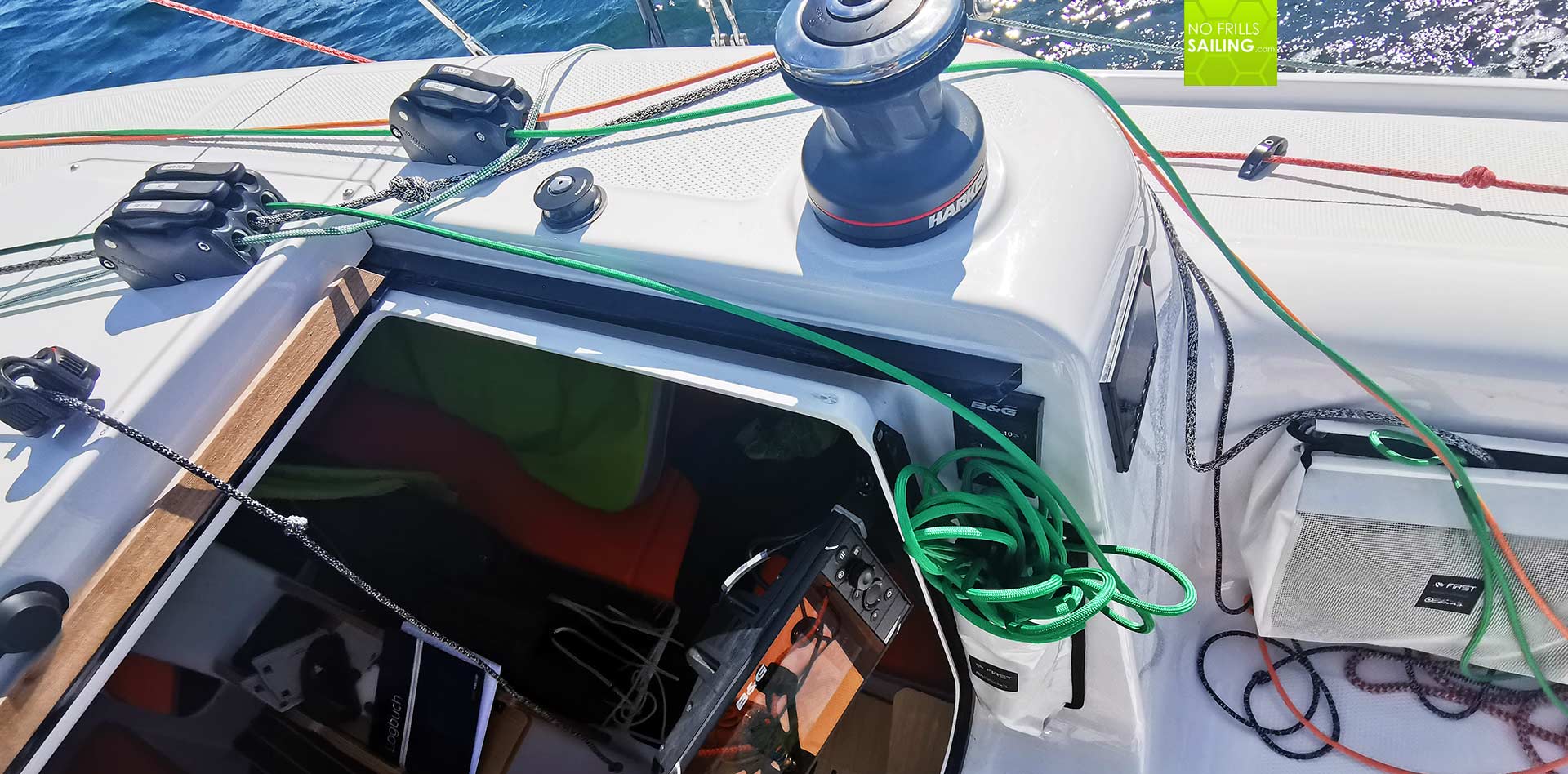
Last not least, here´s one nice hint for Gennaker rookies: The Gennaker halyard. Now, a short story: Yesterday I sailed along the German Island of Ruegen, which is the biggest Island of Germany, boasting very impressive cliffs. I sailed near the coast line exposing myself to some serious eddies coming off these cliffs regularly: I like adventure. In this, the normal windspeed of some 9 to 11 knots used to rise in short bursts to 13 and 15 knots, which was cool, but once it went higher than 16 knots. Too much for me as a starter, so I quickly decided to bear away and take the Gennaker down. I was able to perform that stunt in 15 seconds (maybe even less) because I did had the Gennaker halyard curled up and ready to be shot out to stern into the sea at all times. In this, I just opened the cleat and the Gennaker rushed down (but not too fast!) and I “saved” this situation absolutely like a boss. (I hope you excuse this self-pr)
Mooring Single handed
Last but not least, when talking of lines we also shall talk about berthing. This might also be an article by its own in the future because I regularly see crews arriving right at their berth without anything ready: No lines, no fenders. Then stress breaks out and the big hollering starts. So, especially because I sail alone, I do have all set and ready way before even entering harbor. Why? Because inside the narrow marinas anything can happen at all times: Boats coming across your way, other people doing stupid things, gusts – you name it. You simply do not want to be occupied by attaching fenders and lines when inside a harbor: You need to be calm and focused at the helm, looking for your berth, calculating wind and such.
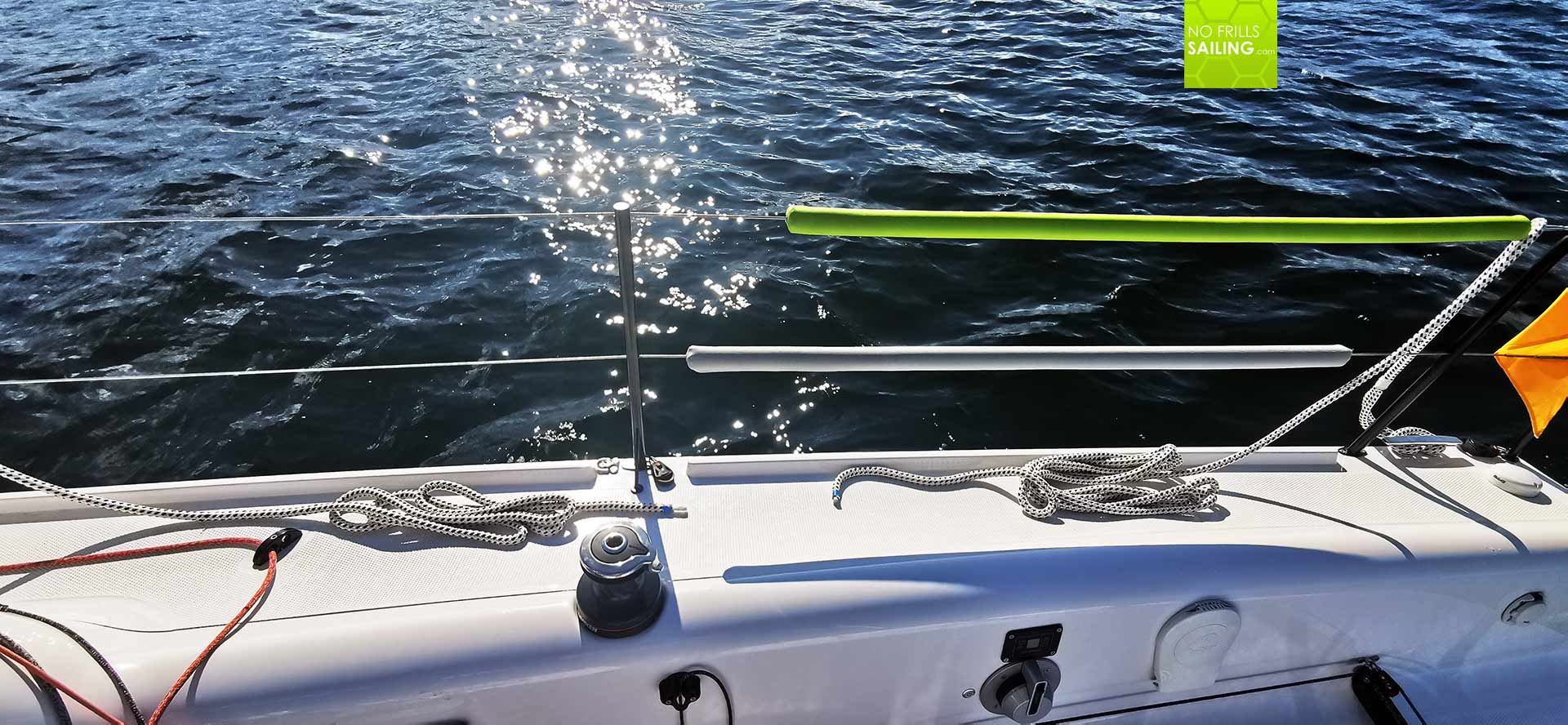
As you may clearly see on the picture above, I have two lines readily attached to their clamps but also coiled up and prepared so that I can grab both at their ends at no time, jump to the jetty and have the boat secured at stern and bow at once. That means of course that the fore mooring line is laying aft where I can grab it. Notice that both ends are clearly made visible. This way, the post side is prepared as well just in case I have to switch sides. I prefer mooring alongside with starboard, of course, but I always have port side ready as fall back.
A safe Sailor – is a good Sailor!
Like my previous post, where I focused on mainly technical features and parts of equipment which enhance the safety of your boat, you and your crew, this article is focused on a practical approach, a “how to”. No matter if you simply copy my system or try to find your own way, in essence, I am talking about seamanship here. Or let´s call it an attitude: Tidy and clean things won´t break or cause trouble, I am sure this is an universal thing. On a boat, even more: Remember the cover picture of this article? This rope-chaos is prone to cause even more chaos.
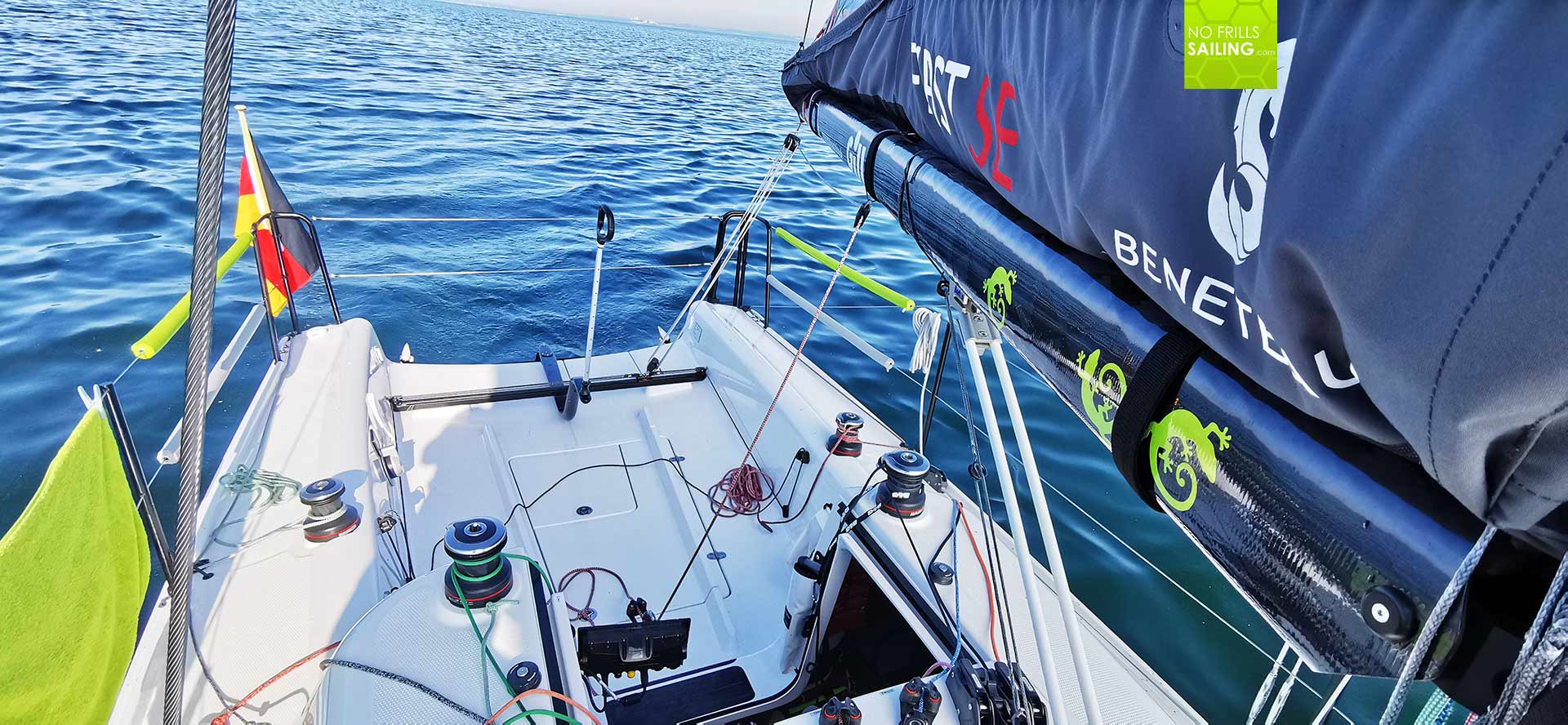
So I urge you, dear readers and skippers, to find your own way to handle your boat and make sure that the ship is always a safe platform for you, your crew and – most important – guests you may have aboard who know nothing about boats, lines and sailing and are completely dependent on your skills and seamanship to master the boat in any situation. And that is why I write it the last time for now: A clean, tidy boat is the safer boat.
You may like to read the following articles too:
All Skipper´s Essentials articles
Learning Tacks and Gybes
My first time as skipper
